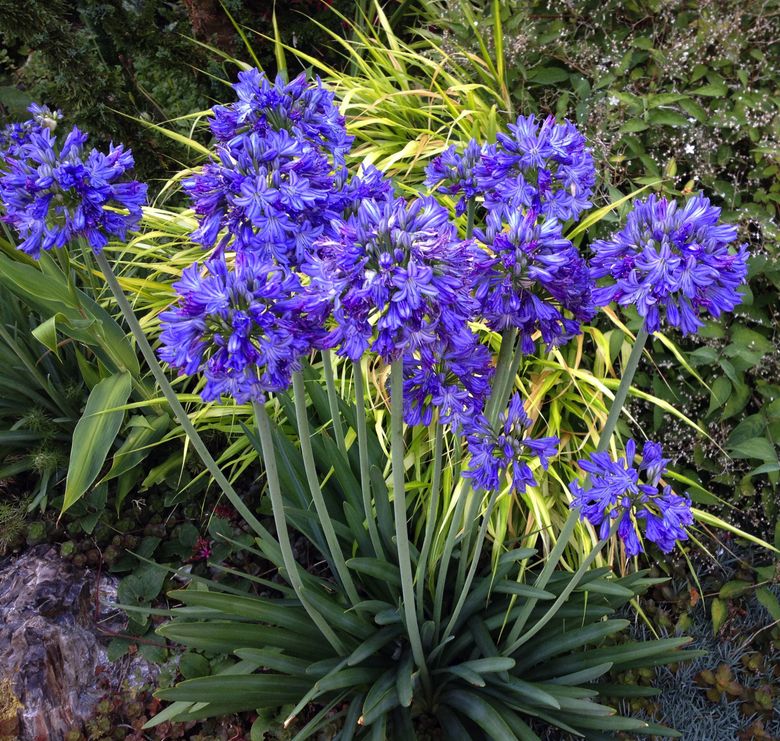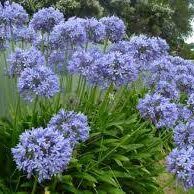Seasonal Agapanthus Treatment: Planning For Winter Months and Summer season
Seasonal Agapanthus Treatment: Planning For Winter Months and Summer season
Blog Article
Grasping the Art of Agapanthus Treatment: Vital Actions for Healthy Growth and Lively Flowers
In the realm of horticulture, the growing of agapanthus stands as a satisfying endeavor for those that look for to support these elegant blooming plants. From selecting the right selection to mastering pruning methods, the trip towards growing prospering agapanthus plants is diverse and holds the vital to unlocking the complete capacity of these herb treasures.

Picking the Right Agapanthus Variety

When picking the best Agapanthus variety for your garden, take into consideration factors such as environment viability, bloom shade, and growth practice. Additionally, consider the climate in your area to make sure the Agapanthus range you select can flourish in your particular problems. Understanding the growth routine of different Agapanthus ranges is essential for proper placement within your garden.
Suitable Planting Conditions
Considering the optimum environmental requirements is crucial for successful Agapanthus growing. Agapanthus plants are delicate to cold temperature levels and must be protected from frost throughout winter season months.
To guarantee healthy development and lively blooms, plant Agapanthus bulbs at a depth of about 2-4 inches and room them 8-12 inches apart. Mulching around the base of the plants aids preserve wetness and subdues weed development.
Watering and Fertilizing Tips
Keeping proper dampness degrees and offering important nutrients are vital components in the treatment program for Agapanthus plants. When it comes to sprinkling Agapanthus, it is vital to strike an equilibrium. These plants favor constantly damp soil but are susceptible to root rot if overwatered.
Feeding Agapanthus is necessary for advertising healthy and balanced development and respected blooms. Use a balanced fertilizer, such as a 10-10-10 formula, in the very early spring as brand-new development emerges. By following these watering and fertilizing suggestions, you can guarantee your Agapanthus plants thrive and create vibrant, durable flowers.
Trimming Strategies for Agapanthus
Trimming Agapanthus plants at the appropriate times and with appropriate strategies is vital for keeping their wellness and promoting optimal growth and blooming. The optimal time to trim Agapanthus is in late wintertime or early springtime before new growth emerges. Begin by eliminating any kind of yellowing or dead leaves near the base of the plant. Cut them as close to the ground as feasible without damaging the arising shoots.
For flowered stems, wait until the blooms have actually perished and afterwards cut them back to the base. This not only tidies up the plant's look but additionally motivates the growth of brand-new flower buds. Deadheading spent blossoms can also reroute the plant's power right into producing more blooms instead of setting seeds. Nonetheless, if you wish to gather seeds for proliferation, leave some flowers to completely dry recommended you read and fully grown on the plant.
Remember to use clean, sharp tools to make accurate cuts and minimize the threat of presenting diseases. Agapanthus. Normal trimming will certainly help keep your Agapanthus looking cool and healthy and balanced while making sure a bountiful screen of attractive flowers
Handling Usual Insects and Illness
After guaranteeing correct pruning strategies for Agapanthus, it is important to address usual parasites and conditions that can influence the wellness and vigor of these plants. Agapanthus plants are normally durable yet can still fall victim to specific concerns. One usual insect great site that influences Agapanthus is the Agapanthus gall midget. This small, orange fly lays its eggs in the foliage, leading to distorted development and blossom buds that fall short to open. To combat this bug, prune and destroy any afflicted plant components and think about utilizing insecticidal soap.
Another usual problem is fungal fallen leave place, which provides as dark lesions on the leaves. To stop fungal diseases, make certain great air blood circulation around the plants, prevent overhanging watering, and remove any type of contaminated leaves immediately. Additionally, Agapanthus plants can suffer from origin rot if they are planted in badly draining pipes soil. To avoid this, plant Agapanthus in well-draining dirt and avoid overwatering. By being attentive and taking prompt activity against diseases and parasites, you can assist your Agapanthus plants prosper and generate vivid flowers.

Conclusion
To conclude, mastering the art of agapanthus treatment includes choosing the right selection, providing perfect planting problems, proper watering and feeding, ideal trimming techniques, and resolving common insects and diseases. By adhering to these crucial steps, you can ensure healthy and balanced development and lively blooms for your agapanthus plants. Keep in mind to frequently keep track of and keep your plants to advertise their overall well-being and durability.
To ensure healthy growth and lively blooms, plant Agapanthus bulbs at a depth of about 2-4 inches and space them 8-12 inches apart. By complying with these watering and feeding tips, you can ensure your Agapanthus plants prosper and create vibrant, durable flowers.
One usual pest that influences Agapanthus is the Agapanthus gall midge. In addition, Agapanthus plants can endure from origin rot if Continued they are planted in inadequately draining dirt. By adhering to these crucial steps, you can ensure healthy and balanced development and lively blossoms for your agapanthus plants.
Report this page